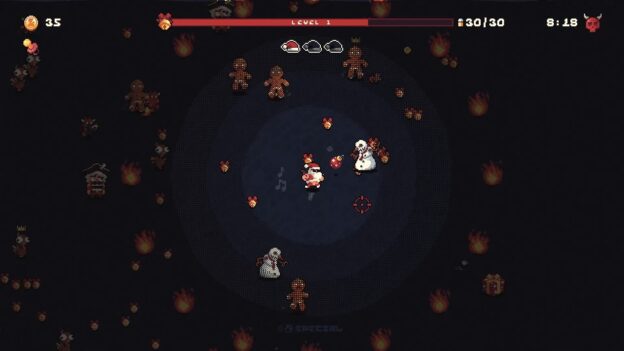Sokobond Express Review – Review

Frequent NWR guest and contributor Syrenne McNulty was involved with the PR for Sokobond Express. The review was written and edited without any input from anyone who works with Syrenne.
I have always been absolutely terrible at understanding exact sciences. Whether it was physics, biology, or chemistry, something about combining math, abstractions, and the natural world always seemed to elude me. So flipping the periodic table on its head and forcing me to face my high school fears was not something that was on my bingo card for 2024. While Sokobond Express is presented as a clean and straightforward puzzle game, I ended up falling into the same trappings that stumped me as a kid, for better or worse.
Sokobond Express is a level-based puzzle game in which you need to guide a group of nuclei to the goal. You are presented with a grid that contains colored letters and need to connect these in such a way that they fit inside the grid when connecting the end. But much akin to chemistry, these nodes will only attach to one another if there is an available positive atom to connect the two. Early levels start out straightforward, tasking you with connecting two H-nodes to an O-node, but the tension quickly escalates as nodes can contain multiple atoms, need to be charged with positive energy, and the routes become winding along the grid.
The presentation is key here. The game feels akin to something like Mini Metro, with a clean UI and interface that does not distract from the puzzles. You will not be coming to Sokobond Express for a story, but after completing a stage you are presented with a little fun fact about the element you just put together. It helps tie the experience together and feels sufficiently rewarding after completing a puzzle.
The puzzles themselves can be hit or miss. While the level structure presents itself fairly linearly, I found the difficulty to be wildly fluctuating. One moment I breezed through a puzzle on my first attempt, but the next I was stumped for a good fifteen minutes. There are some good attempts at variety, such as the aforementioned positive ions that need to be added to your connecting line. But overall you will be drawing and redrawing lines during the entire game without too many mixups.
I do think a flaw of the clean and straightforward presentation of the game is its hint system during puzzles. When requesting a hint the game will show you how the final shape of the connected nodes should look. It’s up to the player to figure out how to trace the line in such a way that it looks like the hint. I think it is a good way to communicate a hint, but it does mean that the hint button tends to turn into an “instant solution” most of the time. I’d have rather seen that the game builds up its hint system so that you can still figure out part of the solution yourself. I admit it is a tight balance, but in a game that relies on you getting better at understanding its puzzles, I did lose myself in the abstraction of it all.
Sokobond Express is pretty much exactly what you see. If you enjoy slightly abstract but “think-heavy” puzzle games, there is a lot to enjoy here. It is easy to pick up and play while looking to pass the time for a few minutes. Though its difficulty spikes and slightly too revealing hint system are at odds with its design, I found it to be a delightful puzzle experience that even taught me a few things about atoms and ions. While I am not head over heels for it, there was certainly some chemistry to be found.




